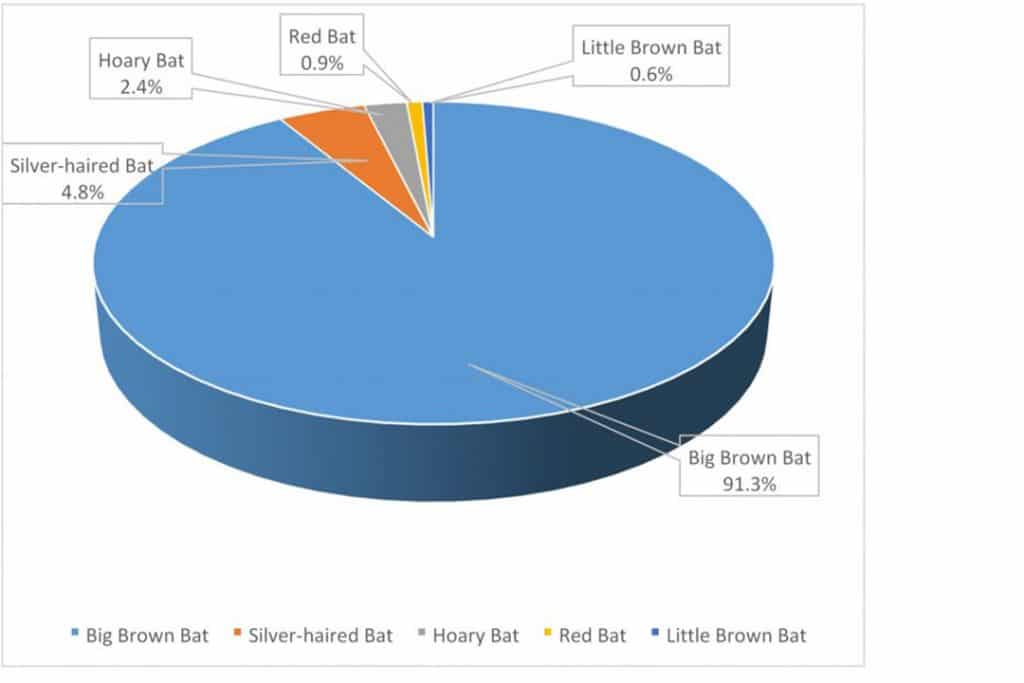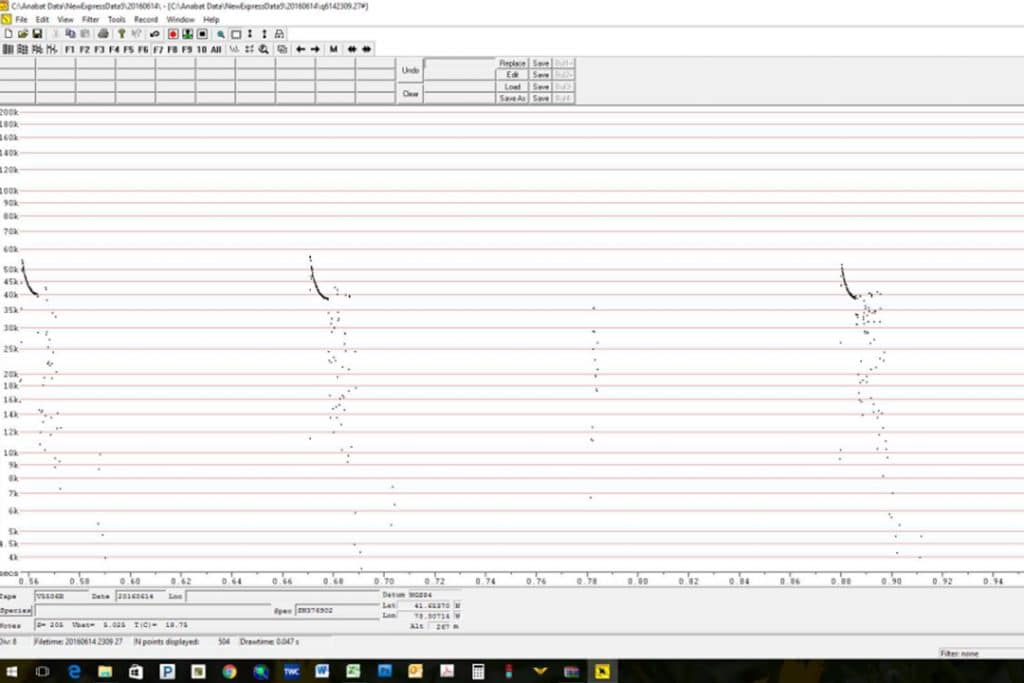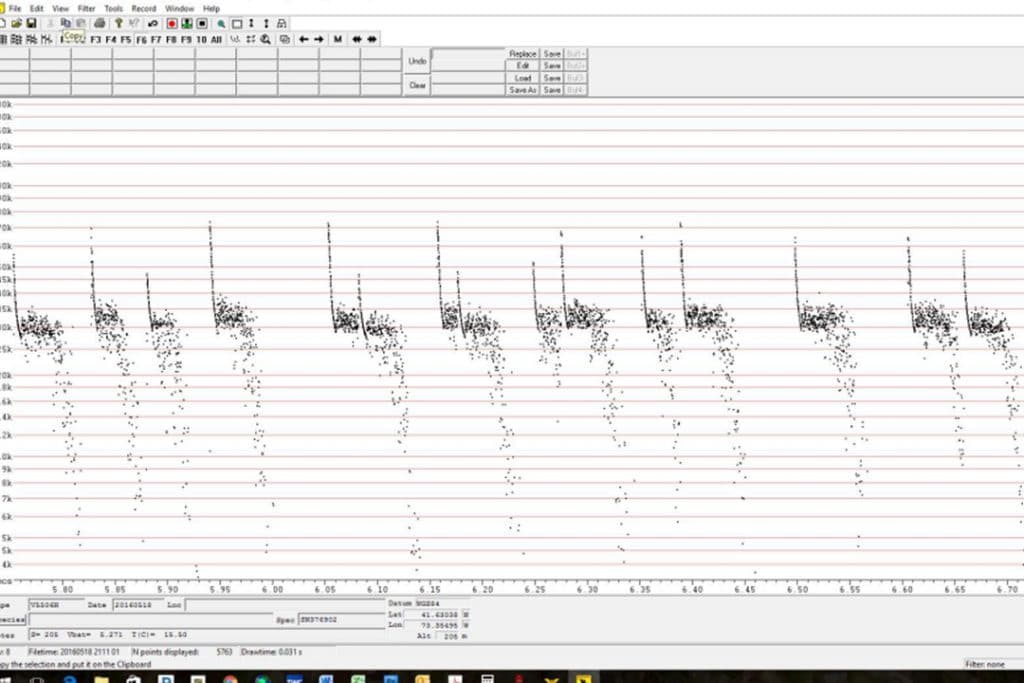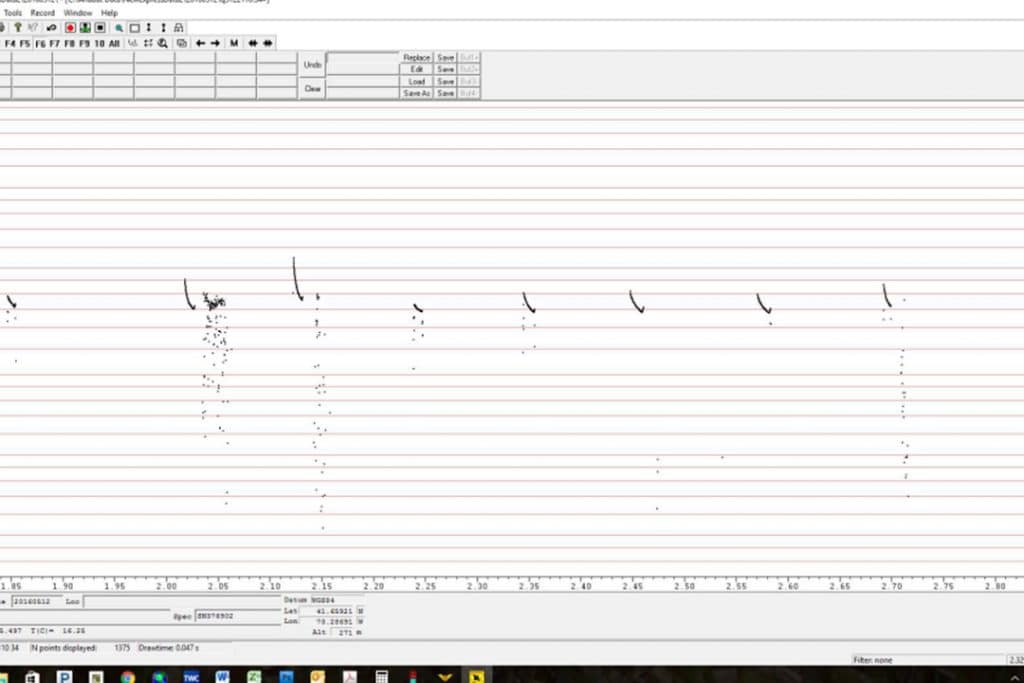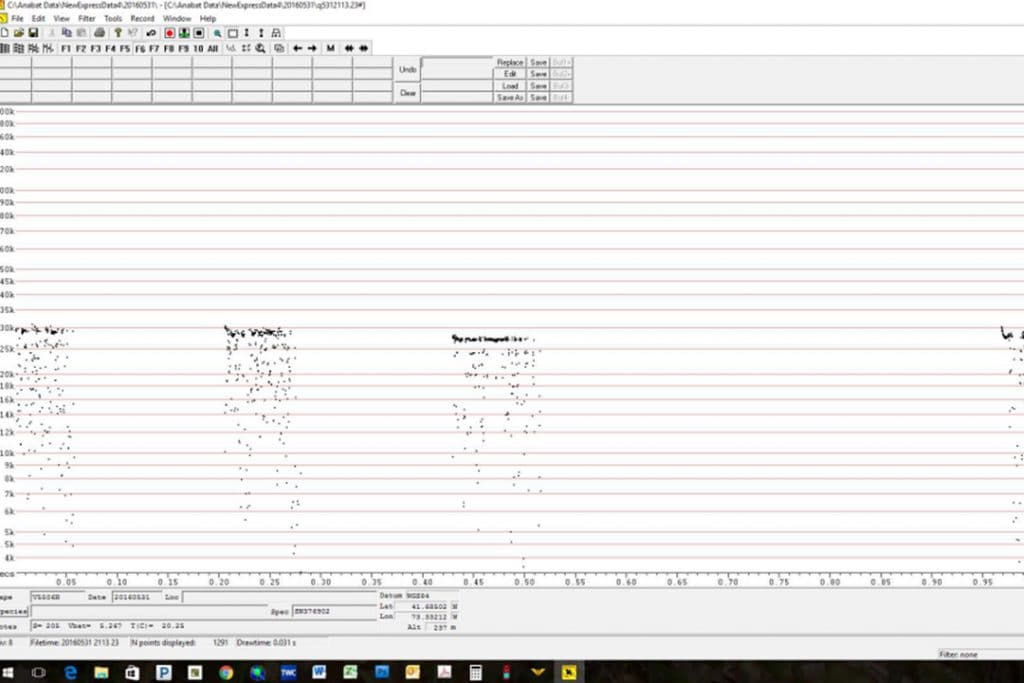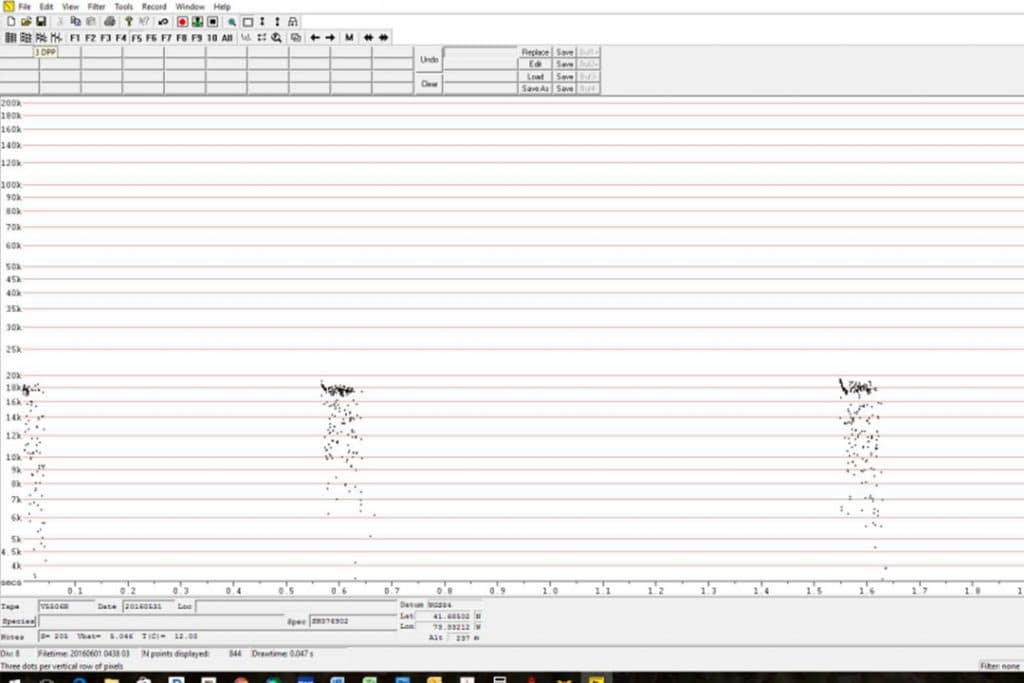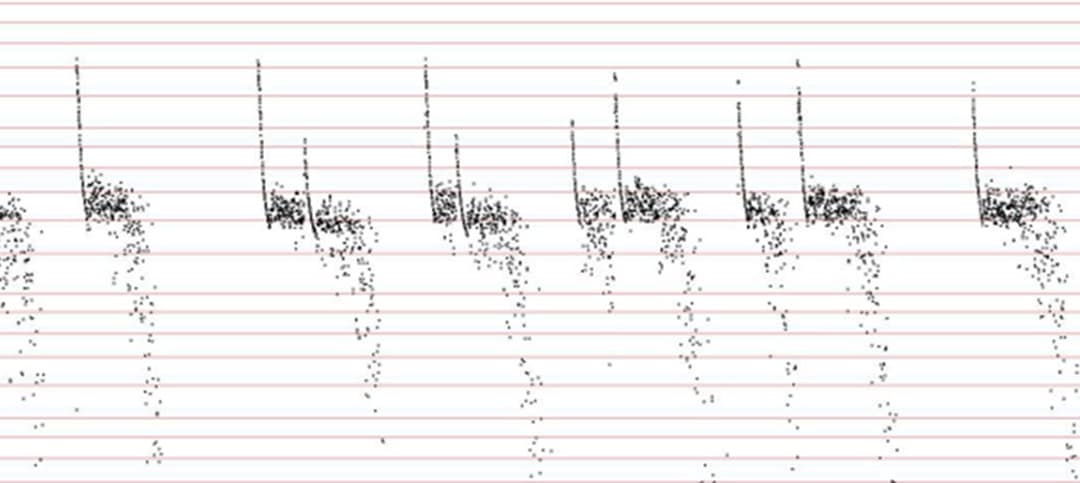Bats not only flap webbed digits to get around. They also use echolocation to navigate through their surroundings and capture insects, rapidly emitting high-frequency pulses of sound and interpreting the echo produced when they bounce off nearby objects. This behavior allows for non-invasive sampling through a method known as acoustic monitoring. Detectors housing a microphone are deployed overnight to record “calls”, most of which occur at frequencies too high to be heard by the human ear and often vary enough between species to allow for identification. Steep Rock Association (SRA) did just this through the summer of 2016.
Within our strategic plan, a primary stewardship initiative is to survey, understand, and manage our properties to protect and enhance biodiversity. By acoustically monitoring bats, we improve our knowledge of what species inhabit the preserves, their relative abundance, and habitat preferences. We can incorporate this insight into our management plan to provide resources for those in greatest need of conservation. Populations throughout the northeast have declined, most notably being the abrupt collapse of cave-roosting bats following the introduction of white-nose syndrome (WNS) to New York in 2008. WNS results from an infection by the cold-loving, cave-dwelling fungus Pseudogymonascus destructans, which causes bats to cluster near hibernacula entrances, wake up from torpor, and even fly outside during winter. These activities result in a premature expenditure of fat reserves, and in just four years since its detection, the U.S. Fish and Wildlife Service estimated that six million bats had perished in the northeast. Those affected by WNS include the big brown, little brown, eastern small-footed, northern long-eared, tri-colored, and Indiana bats. Connecticut’s tree-roosting species (silver-haired, hoary, and eastern red) migrate rather than overwinter and thus are not affected by WNS; however, they too have experienced regional declines, although much more gradually.
Nine sites in six of our preserves were sampled by SRA staff. In conjunction, Connecticut Department of Energy & Environmental Protection (DEEP) monitored four additional sites as part of their statewide effort. Acoustic analysis identified five species occurring on SRA lands. The big brown and silver-haired bats were the dominant species detected. Hoary and eastern red bats were well represented across the Washington landscape and seemed to prefer foraging early (shortly after sunset) and late (shortly before sunrise). Lastly, the little brown bat, once one of the most abundant species in the state, was found in low numbers at half of the sites.
This summer of 2017, SRA aims to document endangered bats by surveying habitat types less represented in 2016’s efforts, which include open water, old-growth forest, and talus/ledge slopes. Please join our mission to conserve bats who play a vital ecosystem role by keeping insect populations in check. You can protect prime foraging habitat like watercourse corridors and leave snags (standing dead trees) available for summer roosting and pup rearing.
